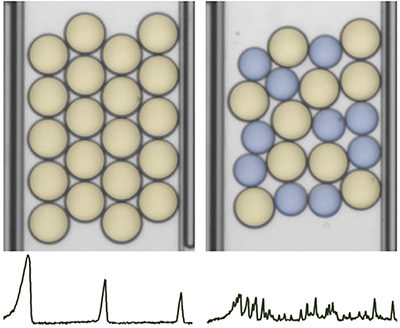We study signatures of the energy landscape’s evolution through the crystal-to-glass transition by compressing two dimensional (2D) finite aggregates of oil droplets. Droplets of two distinct sizes are used to compose small aggregates in an aqueous environment. Aggregates range from perfectly ordered monodisperse single crystals to disordered bidisperse glasses. The aggregates are compressed between two parallel boundaries, with one acting as a force sensor. The compression force provides a signature of the aggregate composition and gives insight into the energy landscape. In particular, crystals dissipate all the stored energy through single catastrophic fracture events whereas the glassy aggregates break step by step. Remarkably, the yielding properties of the 2D aggregates are strongly impacted by even a small amount of disorder.


